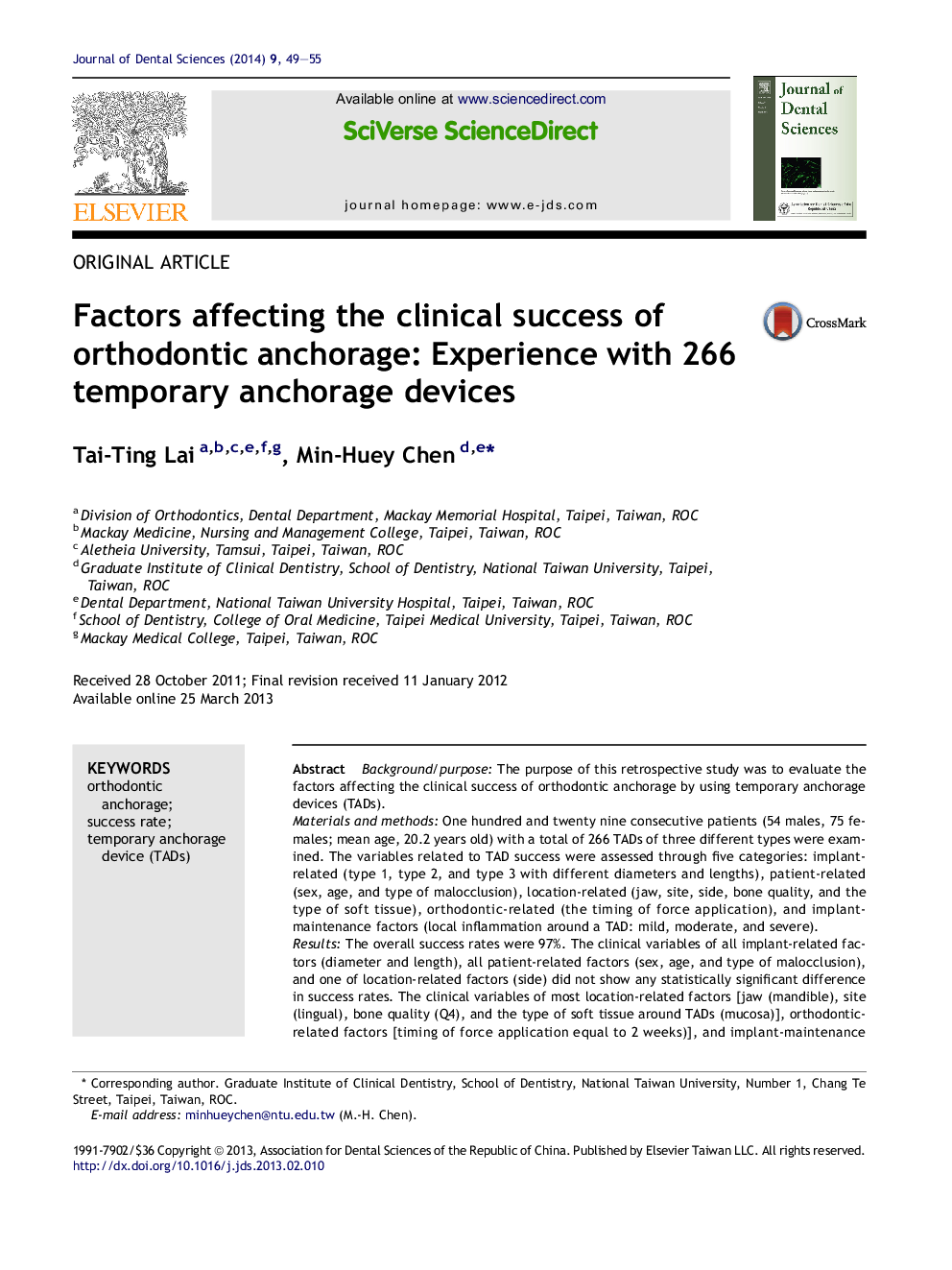| کد مقاله | کد نشریه | سال انتشار | مقاله انگلیسی | نسخه تمام متن |
|---|---|---|---|---|
| 3144753 | 1196992 | 2014 | 7 صفحه PDF | دانلود رایگان |
Background/purposeThe purpose of this retrospective study was to evaluate the factors affecting the clinical success of orthodontic anchorage by using temporary anchorage devices (TADs).Materials and methodsOne hundred and twenty nine consecutive patients (54 males, 75 females; mean age, 20.2 years old) with a total of 266 TADs of three different types were examined. The variables related to TAD success were assessed through five categories: implant-related (type 1, type 2, and type 3 with different diameters and lengths), patient-related (sex, age, and type of malocclusion), location-related (jaw, site, side, bone quality, and the type of soft tissue), orthodontic-related (the timing of force application), and implant-maintenance factors (local inflammation around a TAD: mild, moderate, and severe).ResultsThe overall success rates were 97%. The clinical variables of all implant-related factors (diameter and length), all patient-related factors (sex, age, and type of malocclusion), and one of location-related factors (side) did not show any statistically significant difference in success rates. The clinical variables of most location-related factors [jaw (mandible), site (lingual), bone quality (Q4), and the type of soft tissue around TADs (mucosa)], orthodontic-related factors [timing of force application equal to 2 weeks)], and implant-maintenance factors [local inflammation (mild–moderate and moderate–severe)] showed less success with statistically significant differences.ConclusionIn order to improve the success rates, local inflammation should be monitored and controlled, force application should be 4 weeks after insertion, and the location for placement of TADs should be good quality bone with keratinized mucosa.
Journal: Journal of Dental Sciences - Volume 9, Issue 1, March 2014, Pages 49–55
